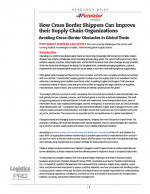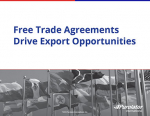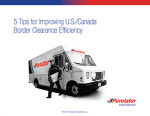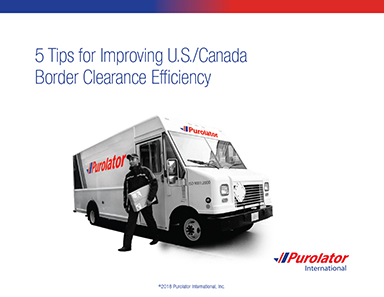5 Tips for Improving U.S./Canada Border Clearance Efficiency
When Canada’s Office of the Auditor General released its 2017 audit focused on “customs duties,” a key finding included the fact “that importers misclassified about 20 percent of goods coming into Canada and may have ended up paying a lesser amount of duty as a result.”
As analysts and journalists still try to make sense of Target Corporation’s ill-fated attempt to expand to Canada, a common theme is that the company misread the Canadian market and failed to take into account both consumer demand and the complexity of building a Canadian supply chain.
In a podcast while discussing the Target failure, Dr. Barry Prentice, a professor of supply chain management at the University of Manitoba in Winnipeg had this to say:
“We’re sort of like Chile sideways... a long, thin country in many ways. If they could’ve just extended U.S. distribution to [Canadian] stores, it would have been easy, because most of the cities are within 150 kilometers of the border. But they couldn’t do that. They had to have distribution in Canada, and that, I think, was a complicating factor.”
Canadian news magazine Maclean’s noted speculation that Target’s Minneapolis headquarters was to blame “for trying to force its processes and procedures on the Canadian operation despite evidence they weren’t working.”
While speculation will likely continue about Target's abrupt and complete 2015 withdrawal from Canada, there are clear lessons to be learned from this example, namely, the need to prioritize a Canada-specific logistics strategy. A company can have a phenomenal inventory of products, but without a solid strategy for moving shipments through the U.S./Canadian customs process and into a Canadian distribution network, there is a high probability of failure.
Did you know, for example, that incomplete or missing paperwork along with improper tariff classifications are top reasons for shipment delays at the border? Or that most U.S. transportation carriers do not have the capacity to seamlessly deliver throughout Canada? Or that shipments to Canada must be labeled in both English and French, since that country is officially bilingual?
What’s Related




Favorites





